A Garden to Rival Kew
With spring in the air it seems a good time to visit gardens! Marie-Luise Gothein’s great classic book on “History of Garden Art” was first published in German in 1913 and then re-published in English in 1928, with the addition of chapters on ‘modern’ English and American gardens. On Aldenham House she says …
In the whole history of garden art, long and remarkable as it is, there has been no achievement more admirable, more satisfying, than that which has been accomplished at Aldenham House, in Hertfordshire.
The modern garden at Aldenham is the work of a man of genuine horticultural genius, the Hon. Vicary Gibbs, a London banker, devotedly seconded by a gardener of exceptional parts, Edwin Beckett. Neither had the special training of an architect or a landscape gardener. The horticultural education of both has been based—and this is significant—on a deep love for plants. Out of that all the rest has sprung. Superimposed upon it there has grown a garden (one might say a whole series of gardens) not only of vast extent but of almost bewildering diversity and overwhelming beauty. As to area, it is only necessary to compare Aldenham with, say, Hampton Court. The flower-garden at Wolsey‘s master piece extended to four acres, that at Aldenham approaches two hundred acres. But area is after all a minor thing, the real core is treatment; and here one realises how inadequate is a single visit in any year, even if one‘s steps have the privilege of guidance by both the great workers. For Aldenham is garden within garden, repeated (with variations) a score, even a hundred, times. It is a garden of all seasons. Standing out above the majority of gardens in its wealth of shrubs, it shows colour of leaf, or stem, or twig alike in spring, summer, autumn, and winter. There is apparently no week, perhaps no day, in which colour cannot be found.
It is particularly in connection with shrubs that one realises the remarkable versatility of Aldenham, A garden most beautiful, it is also virtually a botanic garden, one might almost say a nursery. For there are acres upon acres of shrub-beds, planted, not with commonplace aucubas, but with all the rarest introductions from the Far East. Famous modern collectors in China and Tibet like Wilson, Farrer and Kingdon Ward have had no more liberal supporter than Mr. Gibbs. Hundreds of thousands of seedlings, many wholly unknown to cultivation, are raised on the place every year, each labelled, the pedigree of each docketed. As with shrubs, so with trees, There are vast collections of species, some exotic, some native, of the kinds best known in British gardens, parks and woodlands …
Marie-Luise Gothein’s great classic book on “History of Garden Art“
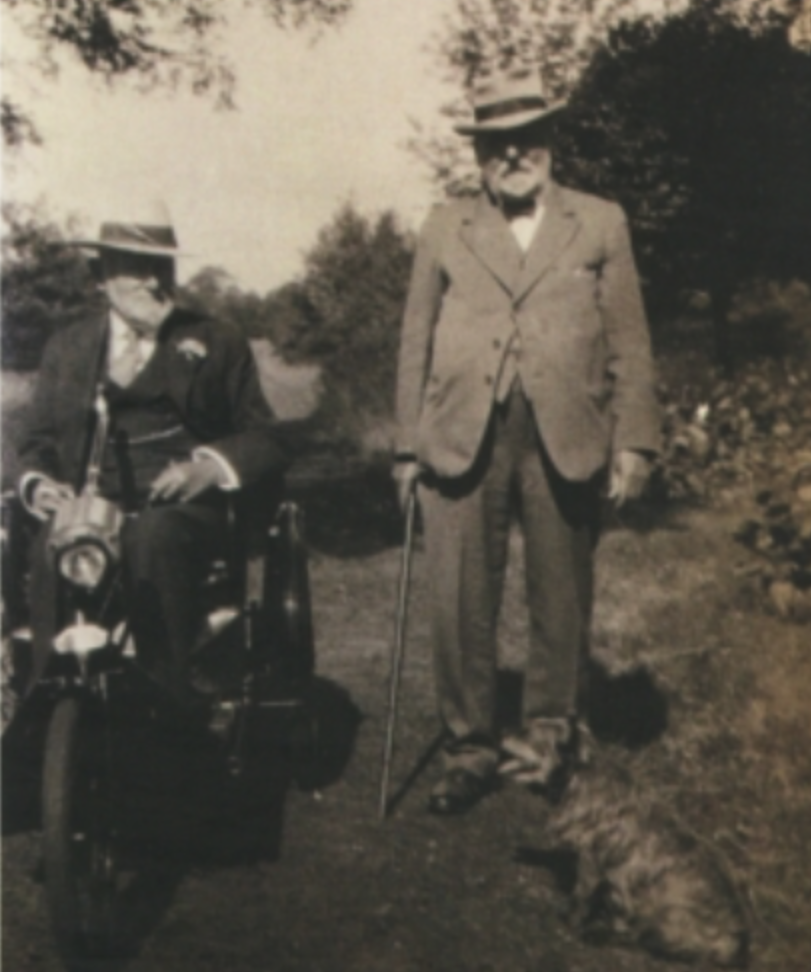
As described in a previous post, Henry Hucks Gibbs acquired Aldenham in 1850, but didn’t move there from his house in Regents Park until 1868, when he set to work transforming the house and estate into a country residence befitting a man of his position. With the help of his younger son, Vicary, and his Head Gardener Edwin Beckett, he established a collection of trees and shrubs on the estate that rivalled those at Kew. They prepared to grow the rare and exotic plants sent back to England by the great Victorian explorers and, in 1907, his gardens were chosen to raise the seeds sent back from China by the horticulturalist, Ernest Wilson. The Aldenham House Gardens were reputed to contain a specimen of every tree growing in the western hemisphere, although this may have been a somewhat exaggerated claim …
Vicary stayed on as lifetime tenant at Aldenham after his father’s death, and it was he who’s passion completed the garden’s transformation, with his 58 strong team of gardeners, many of whom spent their entire working lives on the estate. Vicary became Vice President of the Royal Horticultural Society, was holder of their ‘Victoria Medal of Honour in Horticulture’, and wrote numerous botanical papers; his Kew Bulletin obituary credited him with over 100 RHS Gold Medals.
Michaelmas daisy was one of the specialities of Aldenham with Beckett cross-breading numerous forms, usually giving them the names of the Gibbs ladies, hence ‘Hon. Edith Gibbs’, Hon. Rosalind Gibbs’, ‘Hon, Mrs Henry Gibbs’ …
A detailed 14-page account of Aldenham House Gardens appeared over two consecutive editions of Country Life Illustrated in January 1901 featuring many contemporary photos.
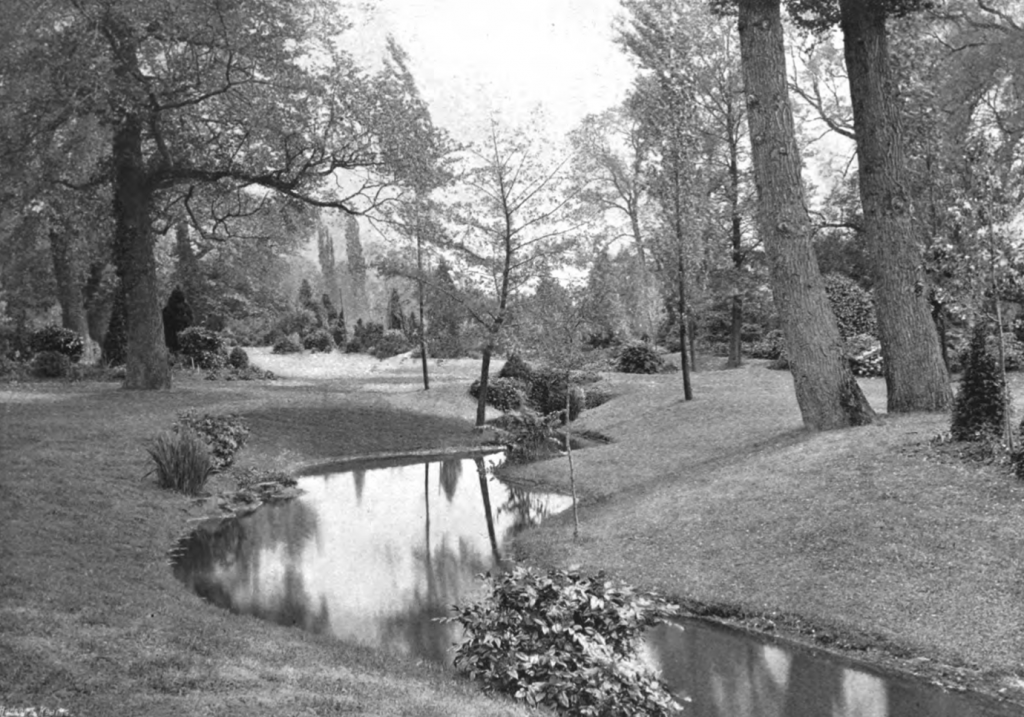
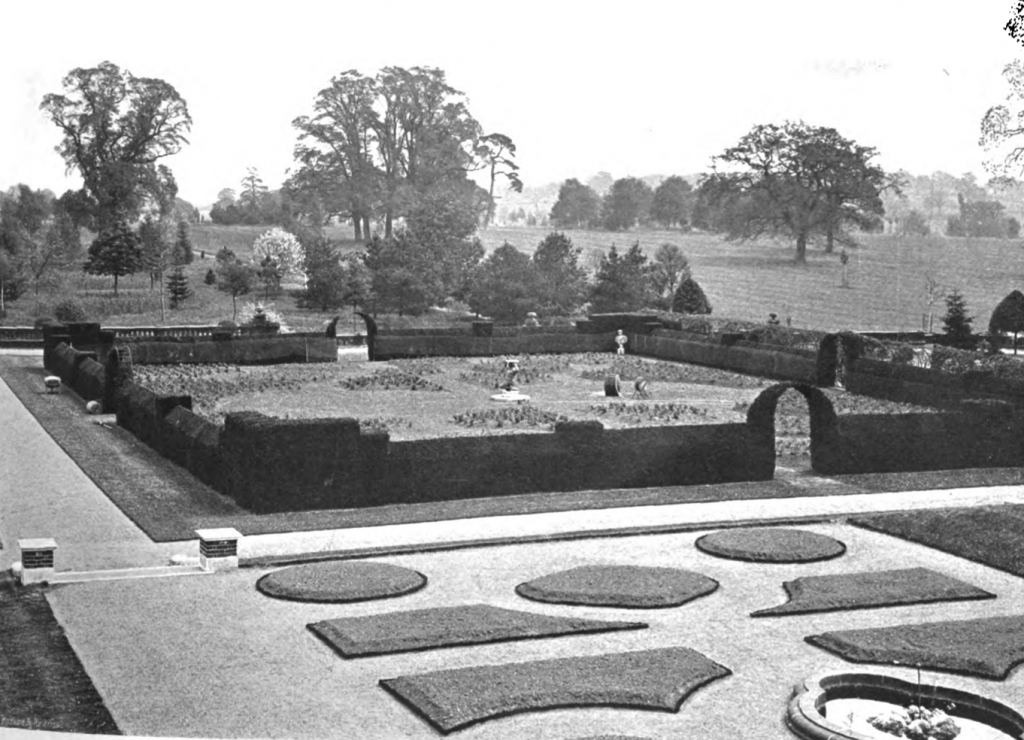
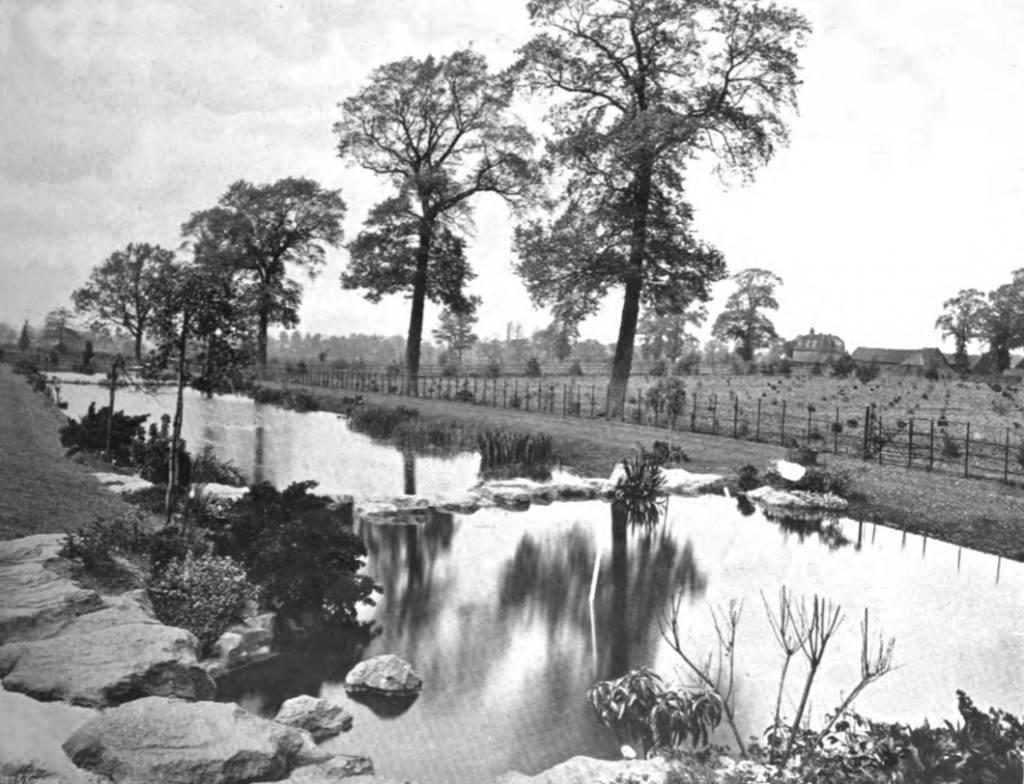
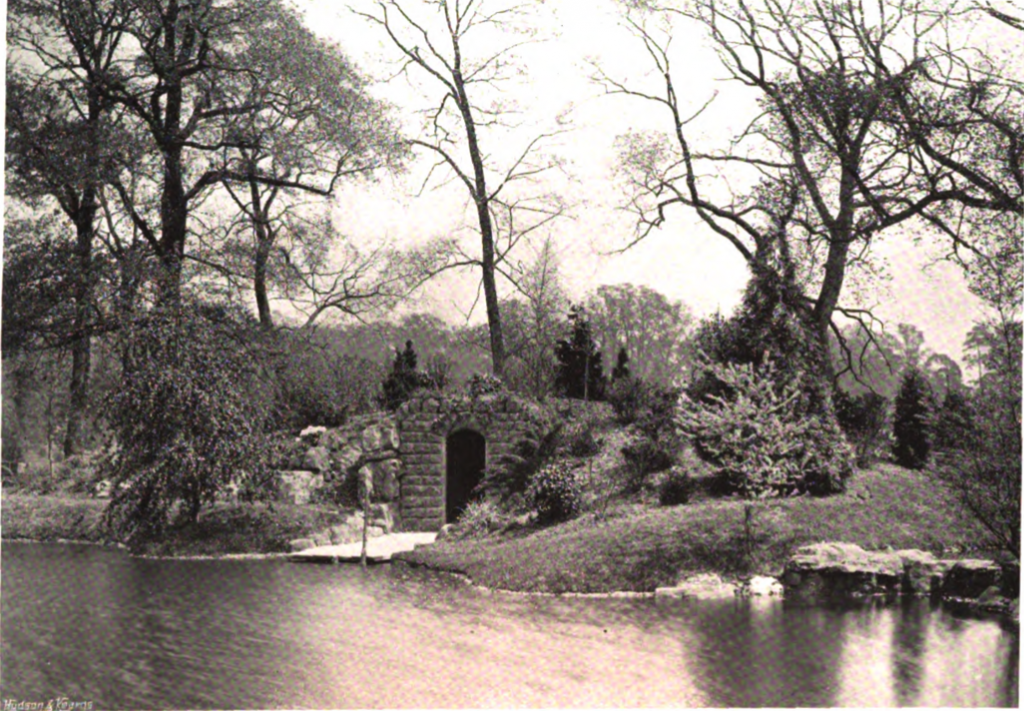
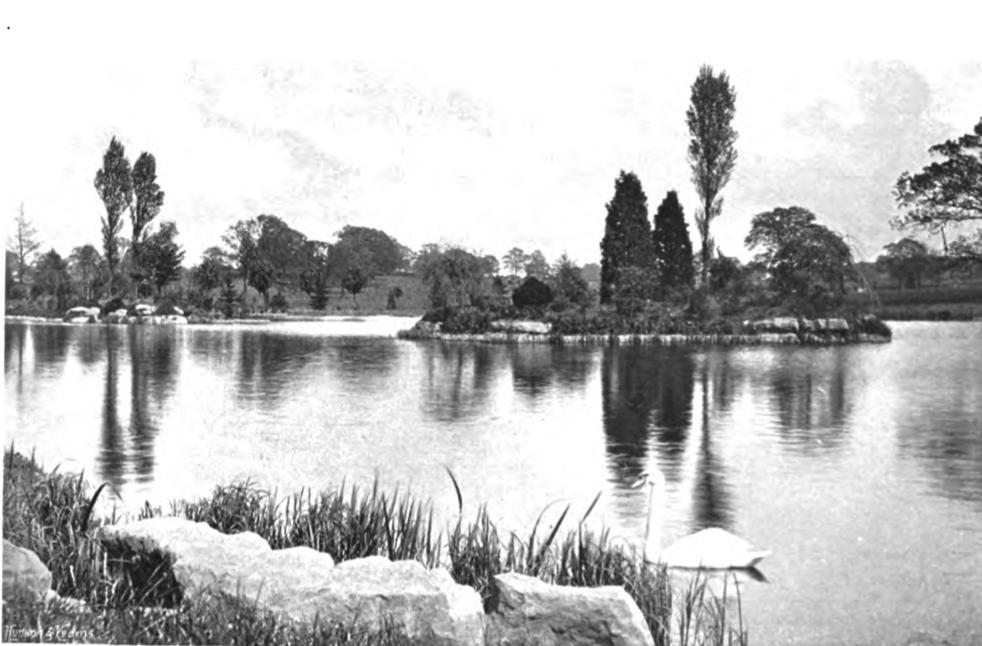
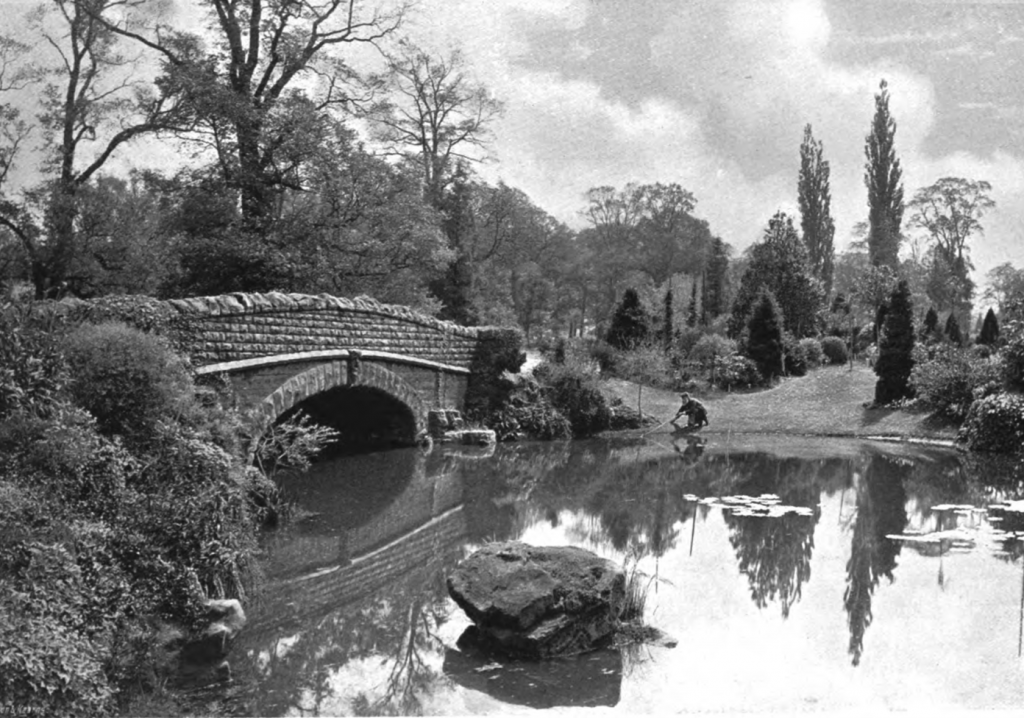
When Vicary died he had no children to continue the legacy of his garden and there were no other family members able to take on the house and gardens, and no charity to save it for the nation. The best specimens in the tree and shrub collection were dug up after being sold in a grand auction in the autumn of 1932 – ‘The Greatest Garden Sale in the World’. Where my parents lived in Kington, on the Welsh borders, there was a country house with beautiful woods, and I recall the old Mr. Banks there had said that he had known Vicary and had bought some trees in the sale. Christopher referred to his great uncle Vicary’s passion for gardening as “Vicary’s Silly Bushes”. How must Edwin have felt at losing his gardens – a lifetime’s dedication?
The gardens were abandoned, then requisitioned during the war for use by the BBC as an overseas broadcasting station. They stayed for twenty years, by which time the grounds had been neglected and deteriorated almost beyond recognition. The Haberdashers’ Company purchased the house and estate in 1959, with the intention of moving their Boys’ School from Hampstead. A great deal of very intensive work was done to clear the overgrowth, and restore as much as possible of the original gardens, as well as convert the house and some of the old buildings, and build a series of new school buildings until they were finally able to open the new Haberdashers’ Aske’s School for Boys on 11th October, 1961. It still thrives today, and, thanks to them, the gardens look a picture!
In 1988 Andrew Lawrence, a student at the school, produced a booklet of “A brief History of the Haberdashers School Gardens“, describing their hey day under Henry Hucks and Vicary Gibbs.
The Gardens Trust has published a couple of extensive articles recalling Aldenham House Gardens on its quarterly magazine “Garden History“:
An Account of the Garden at Aldenham House and of Its Makers: Henry Hucks Gibbs, Vicary Gibbs and Edwin Beckett
By Audrey Le Lievre – Vol. 14, No. 2 (Autumn, 1986), pp. 173-193 (21 pages) available at https://www.jstor.org/stable/1586862
Remembering Horticultural Excellence: Vicary Gibbs (1853-1932) and Edwin Beckett of Aldenham House andGardens, Elstree, Hertfordshire
By Heather Holmes – Vol. 46, No. 1 (SUMMER 2018), pp. 27-56 (30 pages) available at https://www.jstor.org/stable/44987972
Many of our family have continued to have a strong interest in gardening, though on a far more modest scale than Vicary!

How very interesting about the Michaelmas daisies. I wonder if it was entirely coincidental that Michaelmas daisies were grown in profusion at Belmont House, with new ones being developed there, including Little Dorrit and Bristol Blue.
Interesting; the owner of Belmont House in the Tyntesfield Estate was a close cousin of Vicary at Aldenham, so they could well have exchanged a passion for Michaelmas daisies!
How absolutely tragic to lose such an amazing garden and what an asset it would have been now. However, as you say, many descendants have inherited or acquired a deep and abiding passion for plants, animals, and other creatures of the more-than-human world, so perhaps all is not lost! Thanks for this!